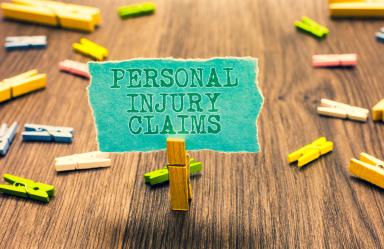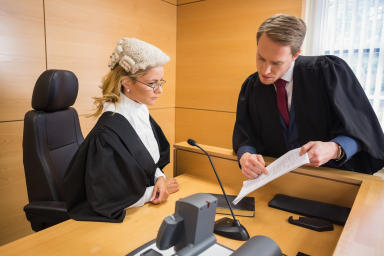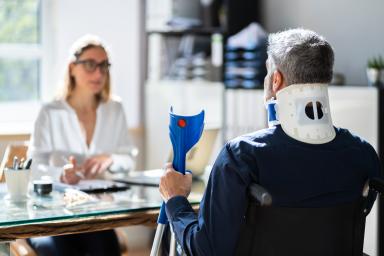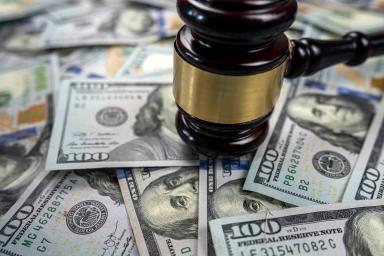Hawaii Personal Injury Laws
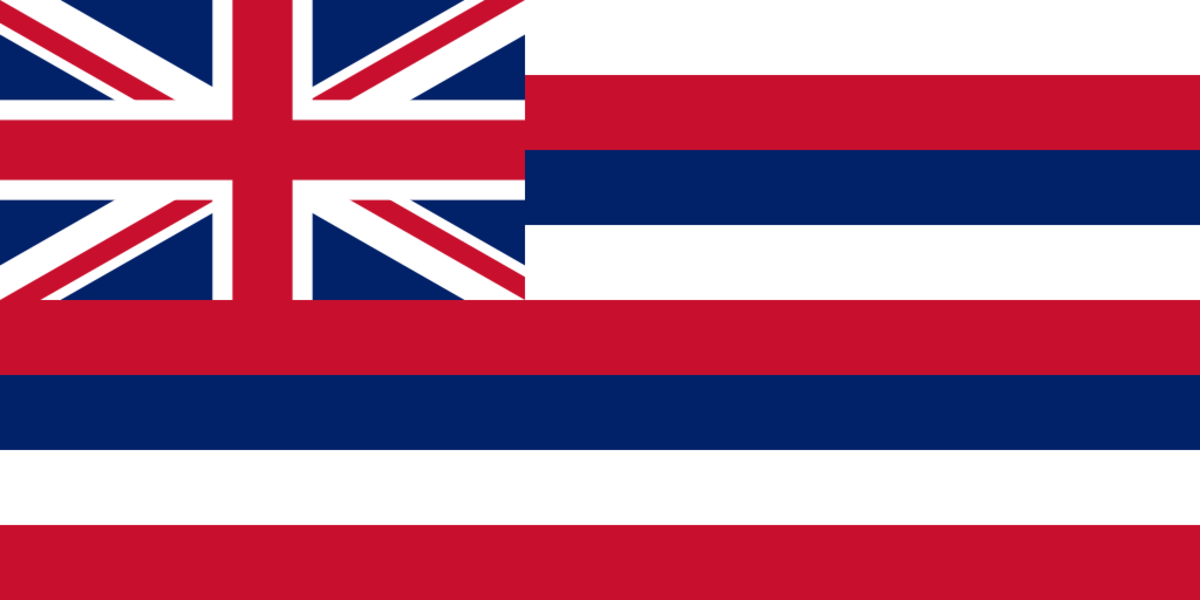
Filing a personal injury claim in Hawaii can be challenging. Aside from dealing with the aftermath of an accident, you have to contact insurers, work with police officers, and obtain records from healthcare providers to build a strong case.
In situations involving wrongful death, such as those arising from preventable causes like motor vehicle crashes and falls, the victim’s surviving family members or personal representatives are also inclined to seek compensation for their damages and losses, but not without dealing with the obstacles.
It is common to feel unsure about navigating the legal process, but know that you are not the only one in this predicament. Over 62,000 cases, each with damages worth $40,000 or less, were filed before district courts in Hawaii in 2021. In the same year, the state’s circuit courts — which handle cases involving damages valued over $40,000 — saw more than 11,000 cases filed.
This article aims to educate you on your legal rights in cases concerning various issues. These range from medical malpractice to state-caused car accidents. It also contains information on Hawaii’s damages caps and statute of limitations. Likewise, the article provides legal resources that can help you pursue the compensation you are entitled to.
Hawaii Laws about Personal Injury Claims against the Government
According to Consumer Affairs, Hawaii has the worst roadway system in the country. Another organization, TRIP, claims that around 69% of the Aloha State’s major roads are in mediocre or poor condition. On average, local drivers have to spend $818 per person to account for the fuel needed and repairs for traveling.
Given Hawaii’s substandard road infrastructure, it should be no surprise that claims against the state government or county authorities are possible. The statute that allows lawsuits against governmental entities is the Hawaii State Tort Liability Act.
However, the law does not grant anyone affected by government negligence the right to sue the latter for damages. A plaintiff must prove through convincing and clear evidence that an official caused the accident out of malice. The Supreme Court of Hawaii defines malice as reckless disregard of an individual’s legal rights. The court also interprets it as the unjustifiable intent to perform a wrongful act.
If a Hawaiian believes they have been injured by an official’s recklessness, they can file a claim before the Risk Management Office, which operates under the Department of Accounting and General Services. Claims involving property damage are also accepted. One can view the form through the department’s website.
Medical Malpractice Laws in Hawaii
Influenza and pneumonia are the most over-indexed causes of death in Hawaii, based on federal data. The state joins New York and Tennessee, which also show a high rate of such diseases.
Healthcare providers may perform procedures like chest X-rays and blood tests to determine whether a patient suffers from pneumonia. Despite this, the disease might be misdiagnosed as another condition due to the associated challenges. For instance, its symptoms often resemble those of the common cold. If left untreated, it could lead to acute respiratory distress syndrome, or ARDS. It is life-threatening, and a patient may suffer complications like antibiotic resistance. This unfortunate event, if it does happen, is a prime example of medical malpractice and negligence on the part of the medical practitioner involved.
As such, patients should have legal recourse against negligent physicians. The state allows lawsuits if plaintiffs submit a claim first before the Medical Inquiry and Conciliation Panel. A certificate of consultation must also accompany the claim to show that the plaintiff sought advice from a licensed physician in the same field as the defendant.
The panel only provides a mediation setting that helps both parties settle disputes. It also offers a way for plaintiffs to resolve their cases relatively inexpensively.
Medical malpractice victims have another way to bring claims against at-fault parties. The agency that accepts these complaints is the Regulated Industries Complaints Office. RICO oversees claims involving a range of licensees, from acupuncturists to social workers. They also receive complaints from those affected by respiratory therapists.
Hawaii Premises Liability Laws
Over nine million tourists visited the Aloha State in 2022. Most of these came from the mainland USA, while a significant portion traveled from Japan and Canada. Visitors contribute to Hawaii’s tourism industry, which accounts for around a quarter of the state’s economy.
However, a troubling trend among tourists visiting the state’s beaches involves getting injured or passing away due to drowning. According to the Hawaii State Department of Health, non-residents comprise the majority of fatal drowning accidents.
In such hapless incidents, who can be held liable? Under the state’s premises liability law, there is no difference between invitees, licensees, and trespassers. Therefore, beach resorts and property owners possess a duty to eliminate unreasonable risks and keep all who step on their property safe.
Owners should also warn users about the dangers of their properties; those who do not alert visitors to the hazards present may be held liable. Consequently, a hotelkeeper could face lawsuits over the injury or death of their guests if no warnings were given about the dangerous conditions of areas like the ocean.
However, claims against property owners will not prosper if they do not charge entry to their lands. Through Hawaii’s recreational use statute, landowners that provide free access to recreational spots are generally protected from lawsuits. State law defines these spots as locations where residents and tourists can hike, fish, hunt, swim, camp, or dive.
Seatbelt Laws in Hawaii
Click It or Ticket is a safety campaign promoted by the Hawaii Department of Transportation. Through an intensive effort by police officers during certain months, HDOT aims to decrease the number of seatbelt-related accidents on local roadways.
The importance of buckling up before driving cannot be overstated. Seatbelt use improves safety, especially when more and more Hawaiians travel unbuckled. Data from HDOT shows that motorists who used seatbelts decreased to 94.3% in 2021 from 97% in 2019. The agency also reported that out of 32 vehicle occupant fatalities recorded in 2021, 20 were unbuckled.
Apart from safety reasons, not wearing seatbelts may be detrimental to someone’s case in trial proceedings. Hawaiian legislators passed a bill in 2008 that allows courts to use a person’s failure to use a seatbelt as evidence.
There are exceptions, though. Under state law, passengers of various emergency vehicles, including ambulances, police cars, and firetrucks, do not need to wear seatbelts. The same regulation applies to those riding mass transit vehicles like school buses. Incidentally, people on sightseeing service buses should buckle up.
Another reason for seatbelt use is fines. Hawaii imposes fines of up to $65 for unbuckled motorists. A portion of the penalty goes to the state’s special funds for neurotrauma. Meanwhile, residents on certain islands could face higher fines. For instance, drivers in Kauai could pay up to $112. Hawaii, Oahu, and Maui residents, meanwhile, may shell out up to $102.
Hawaii Laws about Non-economic Damages
State law defines non-economic damages as non-monetary losses. These damages help plaintiffs deal with their mental anguish, loss of enjoyment, and pain and suffering. The last is a type of non-economic damage caused by a person suffering from a physical injury.
Given that pain and suffering are felt differently by each person, measuring their value is complex. Courts review multiple factors to come up with an assessment of a plaintiff’s non-economic damages. Some of these include the victim's age and whether their injuries are severe.
To simplify the process of valuing an individual’s non-economic damages, an attorney might use the multiplier method. They could argue that their client should be awarded non-economic damages as much as five times their economic damages. Therefore, medical expenses worth $10,000 could allow plaintiffs to recover $50,000 for their pain and suffering.
A caveat to this is in cases involving property damage. Under Hawaii law, no party can claim serious emotional distress from accidents that resulted only in property damage. The state makes an exception for plaintiffs who experienced such distress to the point that they incurred a physical or mental injury.
The state also permits non-economic damages to the surviving family members of victims who felt emotional distress, fright, and suffering before their death.
To improve their claim, plaintiffs may use a variety of evidence. These range from notes provided by a psychologist to a pain journal.
Hawaii Business Liability Insurance Requirements
Businesses in Hawaii should obtain commercial auto insurance. The state’s minimum requirements are:
$10,000 for property damage.
$20,000 for the personal injury of one person.
$40,000 per accident.
Policies with Personal Injury Protection — an add-on that assists victims of motor vehicle accidents with their medical payments — are also required. Hawaii currently sets the minimum at $10,000 per person.
Businesses that own other commercial vehicles face different insurance requirements. For example, towing companies must possess policies that cover at least $500,000 for bodily injury and $200,000 for property damage. Individuals hurt by uninsured towing businesses may receive either three times the damages or not less than $1,000, whichever is greater. Additionally, plaintiffs can also expect reimbursement for their attorney’s fees.
Another type of business that should maintain liability insurance are those that operate vehicles within an airport. Cars that transport at least seven passengers need policies covering no less than $200,000 per accident involving bodily injury. A policy that covers $1 million per accident that results in physical injury is mandatory for vehicles that carry 18 or more passengers.
Similarly, construction contractors need to obtain $100,000 in bodily injury liability insurance to maintain their licenses. Their policies must be able to cover $50,000 of property damage per occurrence.
Is Hawaii a No-fault State?
Yes, the Aloha State adheres to a no-fault system. This way of claiming damages is particularly applicable to victims of motor vehicle accidents.
Similar to the people of New York and Florida, Hawaii motorists must rely on their insurance policy’s PIP to manage accident-related expenses, such as medical bills. Additionally, the party responsible for the crash should pay for the property damage the victim incurred.
The no-fault system is not without its exceptions. Hawaii permits lawsuits against manufacturers of defective vehicles. Plaintiffs may also file claims against defendants who, through their actions, caused a person’s death. Another situation where victims could file lawsuits is if their incurred expenses are higher than the limit of their PIP.
Is Hawaii a Modified Comparative Fault State?
Yes. Most states follow a modified comparative fault system, including Hawaii. It also adheres to the 51% bar rule, which means plaintiffs who are at least 51% responsible for an accident cannot recover damages for their injuries. They may obtain compensation, though, if their fault is 50% or less. In such cases, the value of recoverable damages will decrease depending on the level of fault.
To illustrate this, suppose you were in an accident that resulted in $100,000 in damages. If you were determined to be 20% responsible for the incident, then your damages will be reduced by $20,000. Therefore, the final value of your compensation is $80,000.
How Much Can Someone Sue For an Injury in Hawaii?
The Aloha State does not impose caps on the economic damages a plaintiff may receive from defendants. In other words, there are no limits on the compensation an accident victim can obtain for items like medical expenses and property repairs.
Non-economic damages are a different matter altogether. Hawaii limits the damages a plaintiff may receive for their pain and suffering to $375,000. Other kinds of non-economic damages, like permanent disability, are not capped, though.
Punitive damages, likewise, are not limited under state law. These are different from economic and non-economic damages in that they are awarded to plaintiffs as a way to punish the recklessness or maliciousness of defendants.
The Statute of Limitations in Hawaii
Hawaii provides a timeframe of two years for plaintiffs seeking personal injury damages from defendants. The two-year window is applicable in cases involving injuries to someone or their property. Plaintiffs should file a claim within two years from the date of the accident.
The same timeline applies in cases involving wrongful death. Surviving family members or personal representatives of the victim can press legal action against liable parties from the date of the victim’s death.
For medical malpractice cases, the statute of limitations is also two years. However, courts can lengthen it to six years from the date of the victim’s death or injury. The six-year window also applies to minors hurt by medical malpractice. In cases where the victim is adversely affected by the gross negligence or fraud of a healthcare provider, the time limit may be suspended.
Legal Resources for Injured Folks in Hawaii
Department of Commerce and Consumer Affairs – Office of Consumer Protection
The office handles consumer complaints regarding products not under regulation in Hawaii. These include goods purchased through retail stores, door-to-door salespersons, and mail orders. It also receives complaints involving product refunds, motor vehicle rentals, and gift certificates. Hawaiians seeking damages for defective products need to understand that complaints sent to the office are on behalf of the state’s consumers. As such, it is not possible for individuals to receive damages for their cases alone. In appropriate circumstances, the office can press legal action against businesses and seek compensation for complainants. An individual may file a complaint online. They can also mail their concerns to:
Office of Consumer Protection
235 S. Beretania St., Room 801
Honolulu, HI 96813
Honolulu Police Department
The agency has been protecting residents and tourists in Hawaii since its establishment in 1932. Its jurisdiction is all of Oahu Island. It employs more than 1,800 sworn officers, supported by over 460 support personnel. The agency maintains a variety of programs that help promote safety throughout the island, such as one that allows residents to request speakers on topics like traffic safety and child car restraint awareness. Another thing that the agency manages is reports involving motor vehicle collisions, which can only be obtained in person. Requests should be filed with the Records and Identification Division at 801 S. Beretenia Street.
Hawaii Department of Commerce and Consumer Affairs – Insurance Division
The division regulates and oversees the state’s insurance sector. It provides an informative resource that allows individuals to educate themselves on the premiums they might pay. For instance, the owner of a four-door sedan could pay less on Kauai than on Oahu. Another area that the agency deals with is cases concerning insurance fraud. In such matters, individuals may send a report online. One may also contact the division to report suspected fraud by calling 808-587-7416 or sending mail addressed to:
Hawaii Insurance Division
Insurance Fraud Investigation Branch
335 Merchant Street, 2nd Floor
Honolulu, Hawaii 96813
Hawaii State Bar Association
This nonprofit organization has been working to promote justice for all in Hawaii since its founding in 1899. It operates self-help centers staffed by volunteer attorneys and AmeriCorps members to assist individuals seeking to represent themselves before court proceedings. The association also sponsors the Lawyer Referral & Information Service. This free program, which has been running for more than four decades, allows Hawaiians to understand the cost of bringing lawsuits against liable parties. Those looking for assistance with their cases may e-mail the association at LRIS@hsba.org or call it at 808-537-1868.
Expertise.com StaffAuthor
Step into the world of Expertise.com, your go-to hub for credible insights. We don't take accuracy lightly around here. Our squad of expert reviewers, each a maestro in their field, has given the green light to every single article you'll find. From rigorous fact-checking to meticulous evaluations of service providers, we've got it all covered. So feel free to dive in and explore. The information you'll uncover has been stamped with the seal of approval by our top-notch experts.

